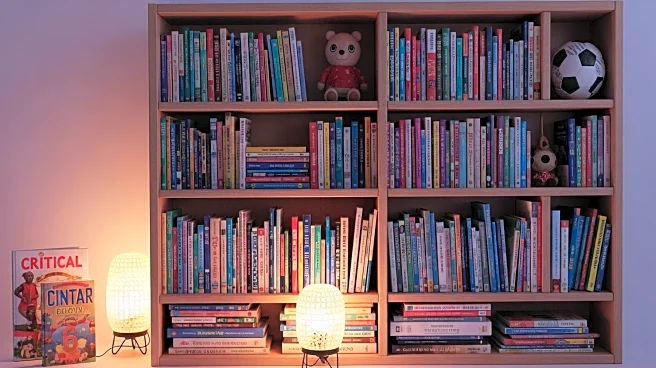What's Happening?
Scholastic has reported a 5% decline in sales for the first quarter ending August 31, 2025, with total sales reaching $225.6 million. The company's operating losses increased to $92.2 million from $88.5 million in the previous year. The entertainment group, affected by production delays, saw an 18% drop in revenue, while the education group experienced a 28% decrease in sales due to funding uncertainties affecting school spending on supplemental materials. Despite these challenges, Scholastic's children's publishing and distribution unit saw a 4% increase in sales, driven by contributions from popular franchises like Hunger Games and Harry Potter. Book fairs also performed well, with an 18% rise in sales, although book club sales fell by 33%. Scholastic has restructured its trade publishing, book fairs, and book clubs into the Scholastic Children's Book Group to enhance collaboration between its publishing and entertainment divisions.
Why It's Important?
The financial performance of Scholastic is significant as it reflects broader trends in the publishing industry, particularly in educational and children's literature sectors. The decline in sales and increased losses highlight challenges faced by publishers in adapting to changing market conditions and funding uncertainties in education. The restructuring efforts aim to leverage synergies between different business units, potentially leading to more innovative content delivery across various platforms. This could impact how educational materials and children's books are marketed and consumed, influencing the strategies of other publishers and stakeholders in the industry.
What's Next?
Scholastic's restructuring may lead to new initiatives aimed at integrating its publishing and entertainment operations more effectively. The company might explore additional partnerships or content formats to enhance its market presence. Stakeholders, including educators and parents, will likely monitor how these changes affect the availability and quality of educational materials. The publishing industry may also observe Scholastic's approach as a potential model for navigating similar challenges.










